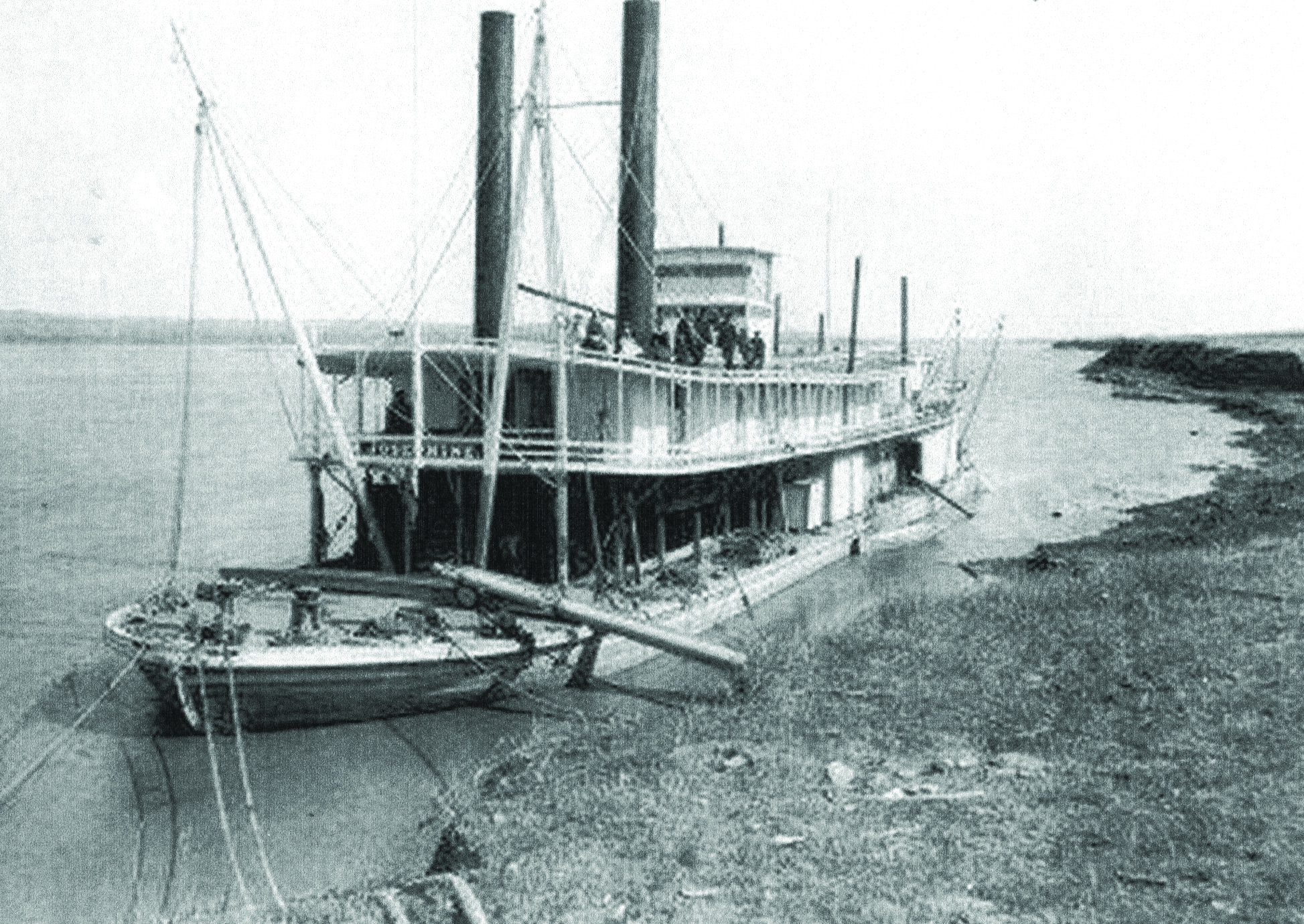It has often been said that no steamboat that ran in the Fort Benton trade had a more varied or interesting career than the Josephine.
The wooden hull—measuring 183 feet in length by 31 feet in width—was built at Freedom, Pa., in 1873; the vessel was completed at Pittsburgh. Two boilers provided steam to engines having 15-inch cylinders with a 5-foot stroke.
Named for the daughter of General David S. Stanley, the boat was owned by J.S. Coulson, Eliza Coulson, Sallie B. Coulson, James C. McVay and Fanny Maratta. Capt. Grant Marsh superintended construction of the riverboat.
As a new vessel in 1873, the Josephine made its first trips to the Yellowstone River, in command of Capt. Marsh, for Custer’s Seventh Calvary. In 1874, the boat entered Fort Benton service, and by 1875, was returned to the Yellowstone River (under Capt. Grant Marsh) to conduct a survey of that stream. The Josephine went further up the river than any other boat, before or since, going above Pompey’s Pillar to Hell Roaring Rapids, 483 miles above the mouth, where it arrived on the afternoon of June 7, 1875. The F.Y. Batchelor later went to Pompey’s Pillar and above some distance. At Billings, Mont., is Josephine Park, named in honor of the steamboat.
The Canadian northwest was being opened in 1875, following the initial arrival of the Mounted Police the previous year. The Josephine transported Canadian troops bound for Alberta and Saskatchewan. Like many other Missouri River steamboats, the Josephine became involved in the Sioux Indian wars during 1876, utilized to transport supplies for Generals Terry, Crook, Gibbon and Custer. The riverboat was attacked by the Sioux at Glendive Creek and continued on after two companion vessels turned back. In total, the Josephine made some 50 trips to Montana; most of them under the Coulson flag, with Fort Benton the destination.
The Josephine was sold in the 1880s to become a government snagboat. Laid up in the autumn of 1889, the boat lay idle for more than a year. After extensive repairs, the rejuvenated riverboat entered government inspection work under the command of Capt. Gould. The steamboat worked out of Bismarck until it was purchased by Capt. Joseph Leach, who planned to operate the vessel as a packet. The Josephine sank in the ice at Running Water, S.D., on March 8, 1907, and was a total loss. The engines were salvaged from the wreckage and shipped to Alaska for installation on a Yukon River steamboat.
River Ramblings
The 15th offering in the Howard Steamboat Museum’s annual educational lecture series will occur on Sunday, October 14 at 4:30 p.m. The presenter will be Kadie Engstrom, longtime museum docent and education coordinator for the Belle of Louisville; her topic will be “Women on the river—here and there.”
Admission to the program is $5 per person, which benefits the museum operating fund. A “Riverboat Rummage” sale will offer donated, used t-shirts and trinkets for purchase. Further information is available on the HSM website at www.HowardSteamboatMuseum.org.




